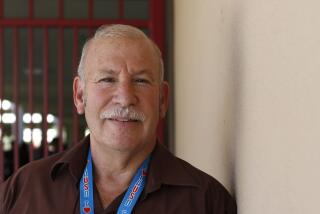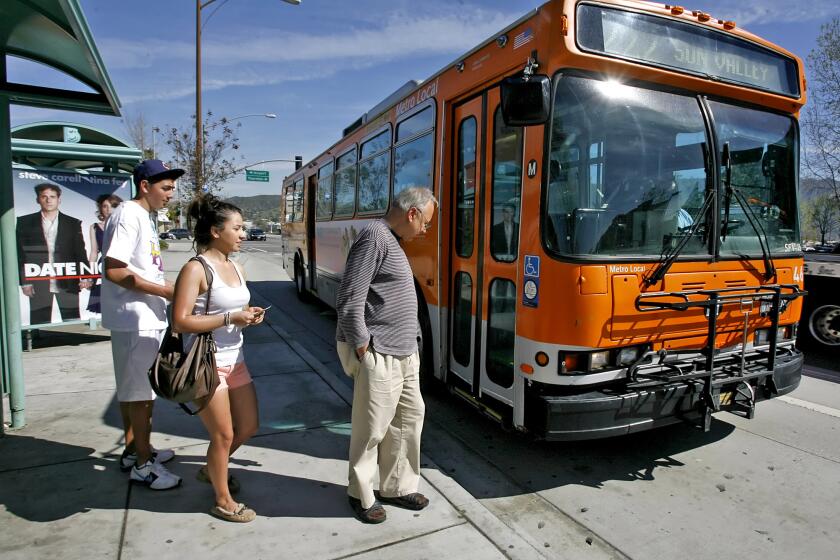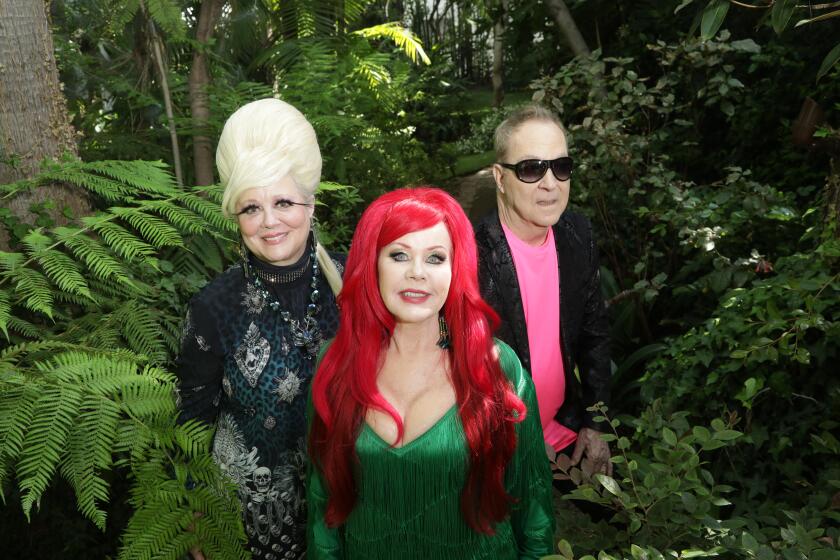L.A. schools consider dumping chocolate milk
An item that’s on millions of kids’ meal trays once or twice a day has become the subject of a food fight in school districts around the country, called everything from part of a healthy diet to “soda in drag.” How could a half-pint carton of chocolate milk be so complicated?
The new superintendent of the Los Angeles Unified School District, John Deasy, said he will recommend that the school board eliminate chocolate- and strawberry-flavored milk in its next dairy contract for the 650,000 meals it serves daily. The current contract expires June 30.
“Youth health has been an issue that has been very present to me — the epidemic of obesity, the epidemic of childhood diabetes, access to locally grown organic foods. The issue of getting the best quality of nutrition,” Deasy said in a telephone interview.
One can walk into any school to see the problem.
“We have to come together as a community and say ‘There are fat kids here and we all have to support the fat kids,’” said Jennie Cook, a Los Angeles parent and caterer working for school food reform. “We have to stop dancing around the fact.”
Cook helped organize a demonstration this year at L.A. Unified headquarters; people brought gallon jugs filled with sugar — the amount they calculated a child would consume by drinking flavored milk twice a day for a school year.
Calls for banning flavored milk have grown lately from activists and nutrition professionals concerned about children’s sugar consumption. The dairy industry has responded with a “Raise your hand for chocolate milk” campaign.
It’s a complicated question for school districts, because flavored milk is popular, accounting for about 60% of the milk students take for their meals in L.A. Unified. Students are required to take three of the four items offered for breakfast and four of the five at lunch for the school district to get reimbursed from the federal school lunch and breakfast programs. Officials say white-milk-only policies could keep children from the lunch line altogether.
But in an April 26 memo to the school board, Deasy said he does not expect the district to experience any appreciable difference in revenue.
Deasy, who took over the nation’s second-largest district in April, said he wants students to have the most healthful options. “Milk is very healthy. Milk with added sugar is less healthy,” he said.
A cup of the fat-free chocolate milk served in L.A. schools has 120 calories, with 20 grams of sugar. Strawberry-flavored fat-free milk has 130 calories, with 26 grams of sugar, the same as a cup of Coke. Unflavored 1% milk has 120 calories, with 14 grams of sugar. (Milk contains some natural sugar.)
Los Angeles would be the largest district by far to eliminate flavored milk. Schools in Berkeley, Compton and San Diego, as well as those in Boulder, Colo., Minneapolis and Washington, D.C., have decided to eliminate flavored milk in at least some meals. New York City schools still serve chocolate milk.
L.A. Unified has been out in front on other school food reforms, including banning sodas in 2004 and regulating foods sold outside cafeterias. An overhaul is underway toward a more “plant-centric menu,” with such items as quinoa salad, said David Binkle, deputy director of food services.
“If L.A. does it, I think you’ve reached the tipping point,” said Ann Cooper, who runs the food services for Colorado’s Boulder Valley School District and who nicknamed flavored milk “soda in drag.”
“We don’t have a calcium crisis in our country, we have an obesity crisis,” she said.
The U.S. Department of Agriculture is considering new rules for school meals, following recommendations from the nonprofit Institute of Medicine for more fruits and vegetables and calorie limits. The institute did not recommend a ban on flavored milk, and there are no federal standards for sugar consumption. L.A. Unified limits sugar for individual items but not for the meal.
Twelve-year-old Diamond Quinn’s jaw dropped and her eyes widened when she heard there might not be chocolate milk at her school, Marina del Rey Middle School, come fall. “Just regular white milk is very boring,” she said.
“I think it’s a really bad idea,” agreed Maria Mora, also 12. “If kids don’t have that, they might as well not eat lunch at all.”
But she and other students eating lunch one recent day acknowledged that they know plain milk is more healthful and that students would eventually grow accustomed to it.
“This seems like an easy change to make, just eliminate it and bam, kids drink skim milk,” said Julie Buric, vice president of marketing for Milk Processor Education Program. “If that were true, that would be a wonderful thing. But from what we’ve seen, it’s not true.”
The dairy industry argues that flavoring milk induces children to drink it, and they then get calcium, vitamin D and other nutrients. Buric cited an industry-funded study showing that milk consumption can drop 35% when flavored milk disappears.
But Kathryn Henderson, director of school and community initiatives at Yale University’s Rudd Center for Food Policy & Obesity, said that research has not been published and there’s little data about how students react over the long haul.
“No one is surprised when children drink less milk when there’s no sugar in it. There’s no surprise there. This is why there’s so much sugar in things,” Henderson said. “My issue with schools serving it is we know children get so much added sugar outside of school.”
In L.A., where about one in three kids is overweight or obese, officials say they’ll try hard to get students to drink white milk if the flavored kinds disappear.
“We’ll do everything in our power — an all-out campaign about the importance of having milk,” Binkle said. “We think it will decline for a period, and we hope it will come back up.”
Watch for Deasy wearing a milk mustache. White, of course.
More to Read
Start your day right
Sign up for Essential California for news, features and recommendations from the L.A. Times and beyond in your inbox six days a week.
You may occasionally receive promotional content from the Los Angeles Times.







